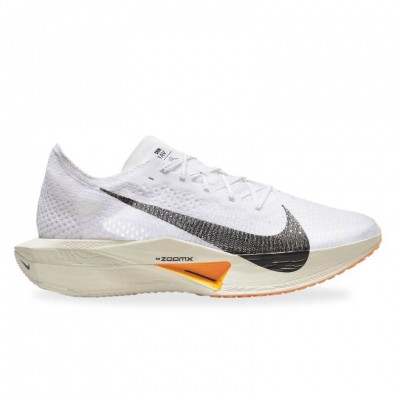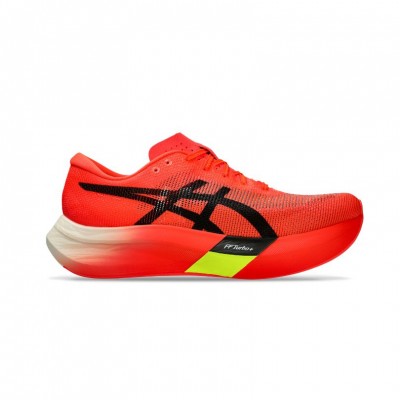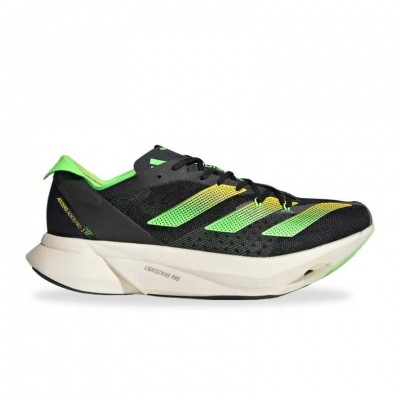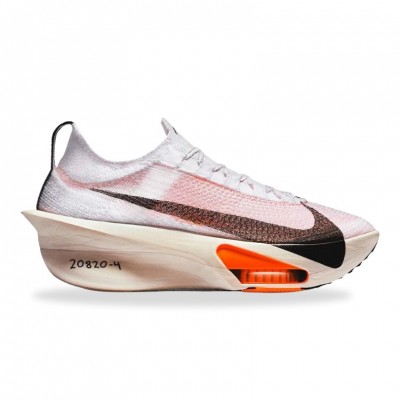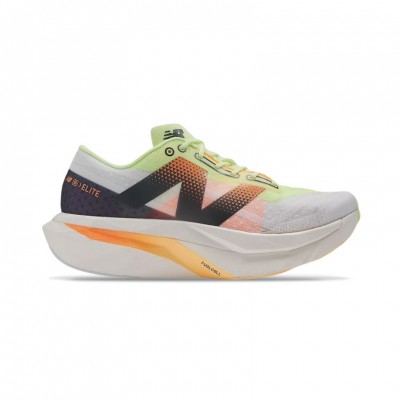The story begins with a question: What makes a shoe "illegal"? It is true that the concept of illegal sounds very strong and owes its nickname to the fact that this type of shoes has been banned in official competitions because their characteristics provide an additional advantage to the runner. The controversy arose with the first Nike Vaporfly. World Athletics (the entity that regulates international athletics) intervened by establishing limits on different aspects of the manufacture of a running shoe, such as the height of the midsole or how rigid plates can be incorporated, among other things. shoes that exceed the specifications set by the international body fall into the category of "illegal" in competition, but what if we use them only for training, or if we are not professional athletes? Brands have realized that there is a very interesting market to exploit and in recent times we are seeing how super shoes with half soles above 40 mm and even with up to 2 carbon plates appear on the market. A mix between comfort and speed, but at quite high prices. A whim for the most exquisite runners? Or are they really a tool that will help minimize fatigue and improve your times? At RUNNEA we want to put the spotlight on these super shoes considered illegal.
Not sure which shoe to choose?
In a few simple steps we help you to choose the ideal running shoe for you.
GO TO THE RECOMMENDERWe gut an 'Illegal' running shoe
I want you to get an inside look at an "illegal" running shoe and how its innovative design can influence a runner's biomechanics.
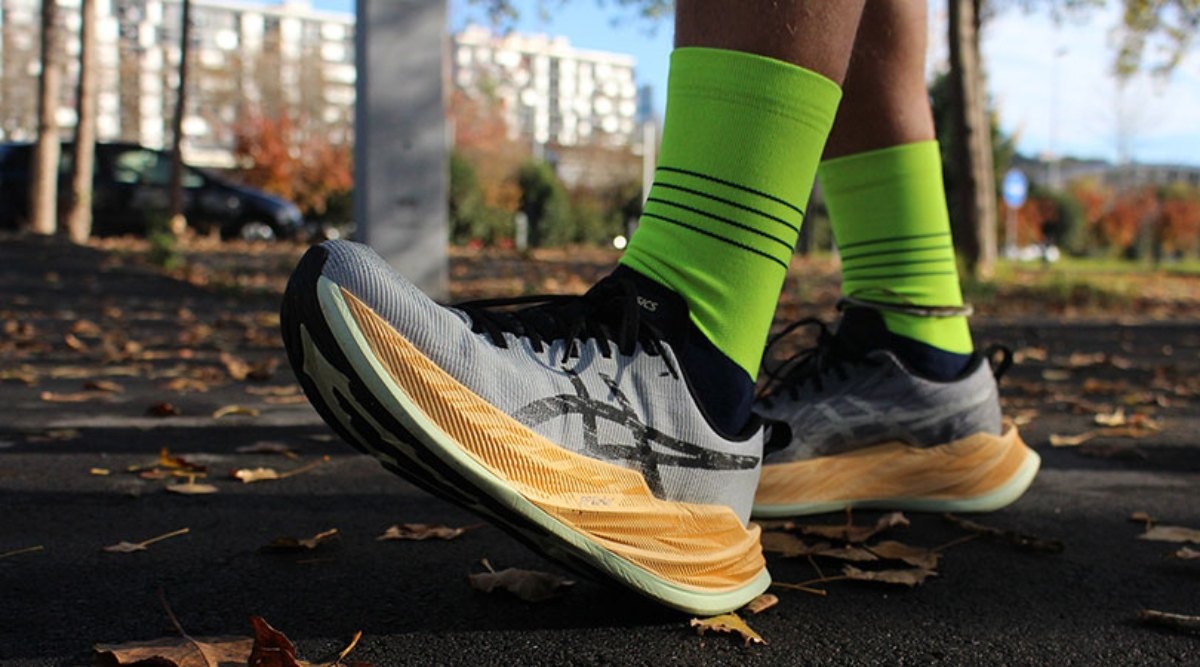
New types of foams
The heart of this type of shoes is their advanced foam, usually composed of Polyether Block Amide (PEBA), known commercially as Pebax. This material is used in foams such as Nike ZoomX, Saucony Pwrrun PB, Puma Nitrofoam, New Balance Fuelcell and Asics FF Blast Turbo. We are already finding these types of foams (at different densities) in both racing shoes and everyday training shoes. And of course they are appearing in "illegal" shoes as one of their selling points.
PEBA-based foams lead the way in the concept of energy return, i.e. more reactive foams. To begin with, they are lighter than TPU and softer and more elastic than traditional EVA. Each brand then adjusts the compression and responsiveness of its foam to offer specific benefits for each model. For example, heavier runners with heel landing footsteps will need a firmer midsole in the heel area to avoid sinking into a foam that is too soft.
Geometry
Another key to the design of these shoes lies in the geometry of each model. In that curved profile, which in our world is known as 'rocker'. This curvature, similar to a rocker or rocking chair, extends from the heel to the toe. It is very characteristic to see in shoes with a more accentuated rocker the considerable height from the toe of the shoe to the ground. The rocker geometry is fundamental in the manufacturing of this type of shoes with such a thick sole, as it allows for a smoother transition during the stride cycle, avoiding above all stiffness in the forefoot.
Shoe designers adjust the inflection points of these rockers according to the runner's pace and stride type, thus influencing transition time. Although the most aggressive rockers are found in racing shoes, their presence in super shoes is essential to ensure comfortable transitions.
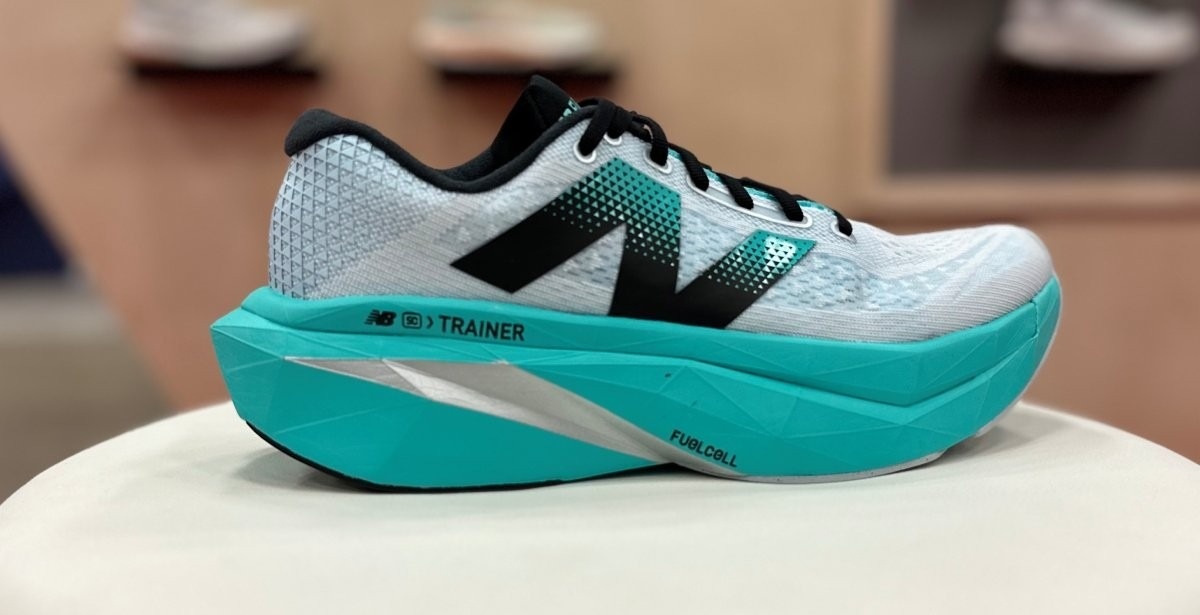
Carbon plate
It's true that not all super shoes have a plate in the midsole, but it's a trend we're seeing more and more of on the market. A plate, whether TPU, EVA, PEBA, carbon fiber or fiberglass, adds rigidity to the midsole and mainly provides additional stability and support. Consider that in a midsole with profiles above 40 mm, it is necessary to stabilize the foot strike cycle. This can be done by playing with foam densities, but it is often more efficient to incorporate a semi-rigid plate. In addition, it can increase the feeling of momentum, but its main function is to stabilize the shoe. For example, the Adidas Adizero Prime X 2 Strung has up to two carbon-infused rigid plates due to its high heel height.
Scientific Evidence: How much does a super shoe really improve performance?
One of the claims most supported by existing scientific evidence is the improvement in running economy, a term that refers to the energy required to maintain a steady pace. A highly regarded study published in 'Sports Medicine' in 2020 revealed that shoes with advanced carbon plates and foams improve running economy by an average of 4%. This improvement can translate into a significant reduction in running times, especially over longer distances.
Beyond times, another significant advantage of these shoes is the reduction in perceived exertion during the run. This means that a runner can maintain a faster pace with the same, or even lower, level of effort compared to traditional shoes. This benefit, which directly impacts fatigue, is particularly important in long distance running.
While we see benefits in terms of performance, the evidence on the impact of these shoes on injury prevention is less conclusive. Some podiatrists suggest that prolonged use of shoes with such radically different cushioning and design may require biomechanical adaptation and may not be suitable for all types of runners.
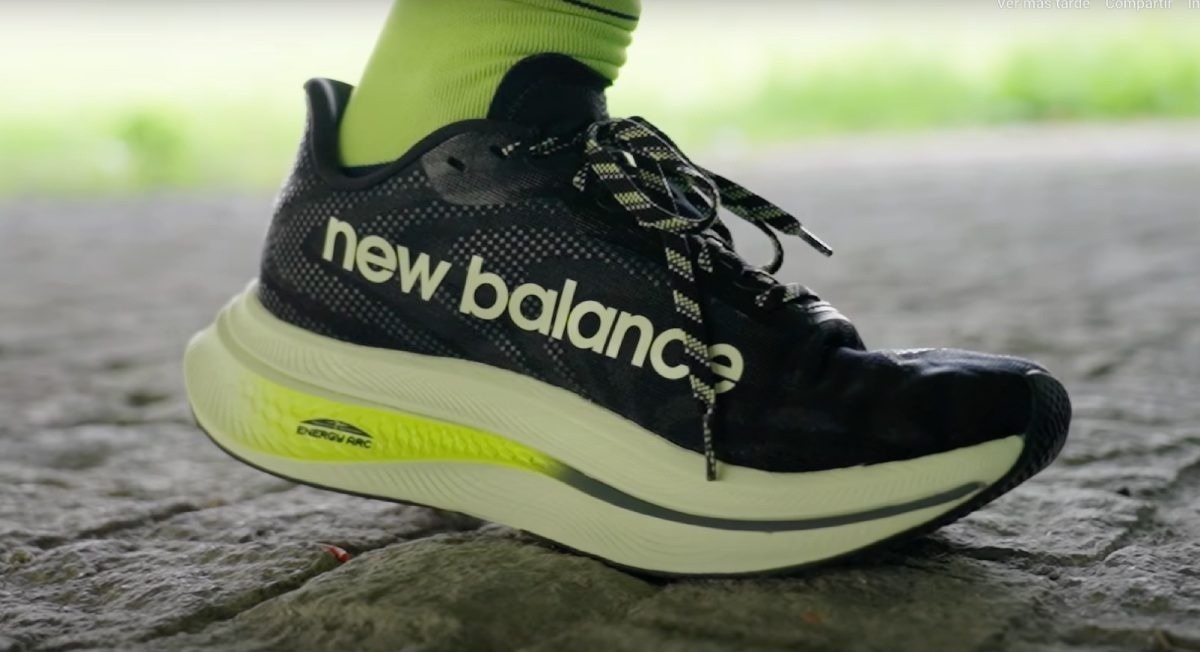
Who are these "illegal" shoes aimed at?
- Professional athletes: First and foremost, these shoes appeal to high-performance runners looking for a competitive edge. Despite restrictions in professional competitions, many elite athletes choose to train in them to take advantage of their benefits in terms of efficiency and recovery. They are particularly popular with those chasing personal bests or qualifiers for prestigious events such as the Boston Marathon.
- Runners looking for new experiences: On the other hand, they are also an option for runners looking to enhance their running experience. They are not athletes who necessarily compete at the highest level, but value advanced technology that allows them to run more comfortably and efficiently, especially over longer distances.
- Runners looking for performance and comfort: In addition, "illegal" shoes are ideal for those who prioritize comfort and want to reduce the impact on joints and muscles during their workouts, especially long runs. Their maximalist design and advanced cushioning technology offer a smoother running experience, making them appealing to runners looking to reduce muscle fatigue.
- Superfans: With all due love and respect, these shoes appeal to the most passionate running who are always looking for the latest fashions.
The potential risks of super shoes
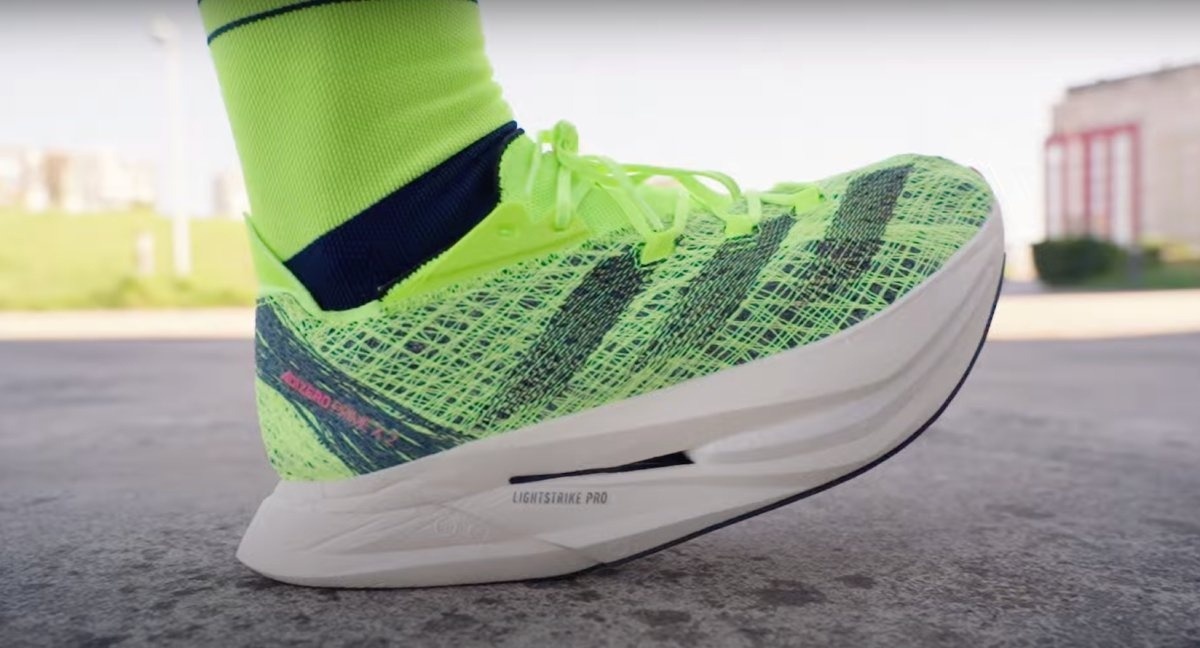
At RUNNEA, we always seek to offer a complete and professional vision of trends in the world of running. That's why we have relied on the experience and knowledge of our podiatrists, Rut Delgado and Toni Fernández Sierra, to better understand the risks and benefits of this type of footwear.
Rut Delgado, a podiatrist who regularly collaborates with sports brands in the development of footwear, stresses the importance of good technique and high paces for the optimal use of carbon plate shoes. In her opinion, these shoes can cause injuries if not used correctly, mainly due to their greater instability compared to other models. She advises not to use them daily in all training sessions, but to alternate them with non-carbon plate shoes, finding them most useful in series training and pre-race days.
According to Delgado, although super shoes can help avoid certain muscle overloads thanks to their greater reactivity and efficiency in the propulsion phase, they also reduce proprioception of the sole of the foot. The latter is especially relevant for runners with impaired foot sole sensitivity, where the use of shoes with high cushioning may not be the most appropriate.
Toni Fernández Sierra provides a critical perspective on the studies that support the improvements in performance and reduction of muscle fatigue thanks to these shoes. He points out that these studies are mostly focused on elite runners with advanced technique, well-trained and balanced musculature, so the results cannot be extrapolated to all runners.
In addition, he points out that the use of these shoes can also generate instability and, consequently, an increased risk of overloads and injuries if the runner's body is not prepared to counteract it. He stresses the importance of choosing the right model that fits the individual characteristics of each runner, including pace, stride type, and adequate training to assimilate the benefits of these very special shoes.
The 3 favorite illegal super shoes of RUNNEA editors
And we couldn't finish this report without recommending 3 of our favorite illegal shoes.
New Balance Fuelcell Supercomp Trainer v2
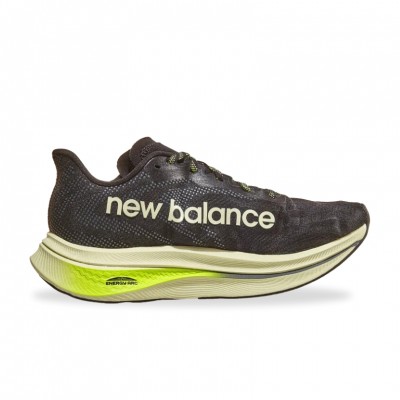
New Balance FuelCell Supercomp Trainer v2
New Balance FuelCell Supercomp Trainer v2
Although in this version it is no longer "illegal" as it has 40 mm of height in the heel area and 34 mm in the forefoot area, for us it is considered a super shoe and the one we liked the most of those with carbon plate. It is the least aggressive in terms of running sensation, also the most comfortable and we love the balance between comfort, cushioning, stability and reactivity.
ASICS Superblast
They don't have a carbon plate but this shoe is a marvel. Lightweight, very cushioned, with a balance in the densities of its foam that give it enough stability and above all very fast and comfortable. It is not a cheap shoe but it is a model that will not disappoint you if you are looking for a shoe for medium and long runs at fast paces.
Adidas Adizero X Prime Strung 2
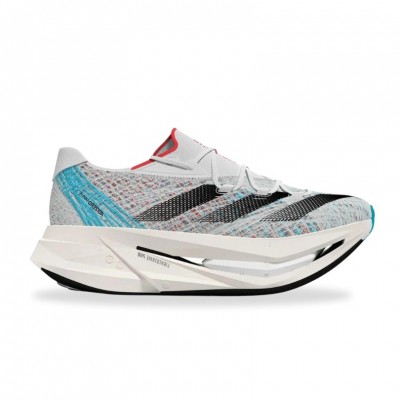
Adidas Adizero Prime X 2 Strung
Adidas Adizero Prime X 2 Strung
Get ready for a feeling unlike anything you've ever experienced. A height of 500 mm in the heel area, 2 carbon plates, a spectacular upper and running biomechanics that encourages you to land on your midfoot or forefoot. It requires a good running technique and your weight not to be too high because it is the least stable of the 3, although the most radical in all aspects. For lively runs where we want to minimize the impact on joints and reduce fatigue as much as possible.
Read more news about: Running News





